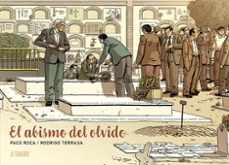Imprescindibles
Más vendidos Libros más leídos eBooks más leídos Todos los libros Todos los libros Autores destacados Series y sagas
Recomendados Libros recomendados Autores destacados Libros que inspiran Vidas con historia LGTBIQ+ English books
Ficción
Literatura Contemporánea Estudios literarios Clásicos Cuentos Poesía Teatro Libros de bolsillo Sagas literarias
Géneros literarios Novela romántica y erótica Novela negra Novela histórica Narrativa fantástica Novela de ciencia ficción Novela de terror Narrativa de humor Narrativa de viajes
No Ficción
Ciencias y tecnología Biología Ciencias Ciencias naturales Divulgación científica Informática Ingeniería Matemáticas Medicina Salud y dietas Formación Idiomas Estilo de vida Libros de Cocina Guías de viaje Narrativa de viajes Deportes Libros de Juegos Manualidades
Humanidades Autoayuda y espiritualidad Ciencias humanas Derecho Economía y Empresa Psicología y Pedagogía Filosofía Sociología Filología Biblioteconomía Estudios filológicos Estudios lingüísticos Estudios literarios Historia y crítica de la Literatura
Infantil
Juvenil
Cómic y Manga
Novela gráfica Novela gráfica americana Novela gráfica europea Novela gráfica de otros países Personajes, series y sagas Series y sagas Star Wars Superhéroes Cómics DC Cómics Marvel Cómics otros superhéroes Cómics Valiant
eBooks
Literatura Contemporánea Narrativa fantástica Novela de ciencia ficción Novela de terror Novela histórica Novela negra Novela romántica y erótica Juvenil Más de 13 años Más de 15 años Infantil eBooks infantiles
Humanidades Autoayuda y espiritualidad Ciencias humanas Economía y Empresa Psicología y Pedagogía Filosofía Historia Historia de España Historia Universal Arte Cine Música Historia del arte
Ciencia y tecnología Ciencias naturales Divulgación científica Medicina Salud y dietas Filología Estudios lingüísticos Estudios literarios Historia y crítica de la Literatura Estilo de vida Cocina Guías de viaje Ocio y deportes
WILLIAM BARTRAM
Recibe novedades de WILLIAM BARTRAM directamente en tu email
Filtros
Del 1 al 3 de 3
DigiCat 8596547733119
In "Bartrams Travels," William Bartram offers an evocative and richly detailed account of his explorations through the American Southeast during the 18th century. This seminal work melds natural history, ethnography, and travelogue, showcasing Bartrams keen observations of the diverse flora, fauna, and indigenous cultures he encountered. His lyrical prose is imbued with the aesthetics of romanticism, reflecting the Enlightenment intrigue with nature and its sublime beauty. The book stands as a crucial contribution to American literature, intertwining the romanticized ideals of wilderness with scientific inquiry, thus placing Bartram among the early naturalists and writers of the American exploration narrative. William Bartram, an influential figure in the early American natural sciences, was heavily influenced by his upbringing in a family of botanists and his discussions with Native American tribes. His background provided him with a profound appreciation for nature and deep insights into the indigenous ways of life, which he deftly weaves into his narrative. Bartrams journeys from 1773 to 1776 led him through vast landscapes, offering him an unparalleled chance to document a burgeoning nations natural heritage at a pivotal time in American history. "Bartrams Travels" is a must-read for scholars, nature enthusiasts, and casual readers alike. It invites readers to experience the untamed beauty of the American landscape through the eyes of an astute observer and to engage with the complex interactions between humans and the natural world. This book not only enriches our understanding of Americas past but also serves as a timeless reminder of our connection to nature.
Ver más
eBook
e-artnow 4066338124654
Presenting the exciting accounts of American botanist, ornithologist, and explorer William Bartrams pioneering survey of the American south. Around the time the American colonies were forcibly dismissing the political bands that connected them to England, Bartram was exploring the wilds of South Carolina, Georgia, and Florida searching for undiscovered plants and birds. As a result, he combined scientific discoveries with incredibly vivid descriptions of nature and delivered a work that would delight both scientists and poets. These chronicles of his four-year journey to the southern British colonies in America are influential as a scientific work, a historical reference regarding American Indians and the American South, and a contribution to American literature.
Ver más
eBook
Good Press 8596547789536
William Bartrams "Bartrams Travels" is a seminal work of American natural history and exploration, blending vivid descriptive prose with philosophical musings. Written in the late 18th century, this narrative recounts Bartrams extensive journeys through the American Southeast, capturing the diversity of flora, fauna, and Indigenous cultures. His lyrical style not only reflects the emerging American identity but also serves as a precursor to the Romantic movement, revealing deep reverence for nature and the interconnectedness of all living things. Bartrams meticulous observations and sketches provide an invaluable firsthand account of a rapidly changing landscape, layered with insights on ecological stewardship and aesthetic beauty. William Bartram, born in 1739 to a family of botanists and explorers, was deeply influenced by his fathers botanical pursuits and the Enlightenment ideals of rational inquiry and empirical observation. His travels from 1773 to 1776 were motivated by a quest for knowledge, an appreciation of nature, and a desire to document the richness of the American wilderness. This passionate intertwining of exploration and intellectual curiosity informs the text, making it not just a travelogue but an early reflection on American nature writing. "Bartrams Travels" is essential reading for anyone interested in early American literature, environmental history, or the natural sciences. Through Bartrams eyes, readers will experience a profound connection to the beauty and complexity of the American landscape, while gaining insight into the philosophical queries that underpin our relationship with nature. This work remains a touchstone for understanding the evolutionary trajectory of American thought and ecological awareness.
Ver más
eBook
Del 1 al 3 de 3






























